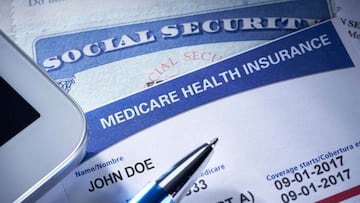SOCIAL SECURITY
What is the maximum income to be eligible for Medicaid this year 2024?
Medicaid support is mostly managed on a state-by-state basis, making it only possible to determine the limit from the Federal Poverty Level.

Medicaid is a health insurance program that is funded jointly by federal and state governments which strives to help low-income individuals have access to healthcare. It was established to provide medical coverage to children, parents, pregnant women, the elderly and the disabled who have limited income.
Although the federal government sets some basic ground rules, each state can choose whether to offer more healthcare services than those mandated. The Affordable Care Act allocated funding for states to expand coverage to all adults with income no more than 133% of the Federal Poverty Level (FPL). It also allows 5% of income to be ignored so the threshold is 138% of FPL in reality.
All states, the District of Colombia, and US territories offer Medicaid, although the extent of that participation varies. States can set their own income thresholds higher, or in the case of the non-expansion states lower, than the federal level, meaning that there is no uniform income threshold for Medicaid eligibility.
Federal Poverty Level thresholds to qualify for Medicaid
The Federal Poverty Level is determined by the size of a family for the lower 48 states and the District of Columbia. In 2024 these limits are:
- $15,060 for a single person household,
- $20,440 for two person household
- $25,820 for three person household
- $31,200 for four person household
- $36,580 for five person household
- $41,960 for six person household
- $47,340 for seven person household
- $52,720 for eight person household
For families/households with more than eight persons, add $5,380 for each additional person.
The Federal Poverty Level, which the Department of Health and Human Services determines, is higher in Alaska and Hawaii. The amount is adjusted each year to take into account inflation.
The District of Columbia has the highest income limits for eligibility, set at 221% for a family of three and 215% for all other adults. Texas has the lowest threshold to qualify at 16% for a family of three. Pregnant women and children tend to have much higher income thresholds to qualify.
The income threshold percentage can sometimes depend on the claimant’s employment status, but this is generally waived for certain categories including the elderly, disabled individuals, pregnant women and children.






